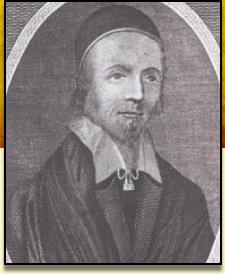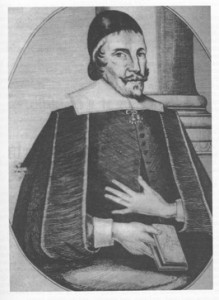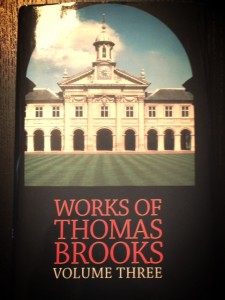 One of my Endeavors for 2014 is to read Isaac Ambrose’s timeless tome, Looking Unto Jesus: A View of the Everlasting Gospel: Or, the Soul’s Eyeing of Jesus, As Carrying on the Great Work of Man’s Salvation, from First to Last.
One of my Endeavors for 2014 is to read Isaac Ambrose’s timeless tome, Looking Unto Jesus: A View of the Everlasting Gospel: Or, the Soul’s Eyeing of Jesus, As Carrying on the Great Work of Man’s Salvation, from First to Last.
If you aren’t familiar with Puritan works just know that title is not particularly long for those 17th century divines.
So just who is Isaac Ambrose? I can’t improve upon the work of Beeke and Pederson in Meet the Puritans. Here’s a short-ish adaptation.
AMBROSE THE MAN
Isaac Ambrose was born in 1604, the son of Richard Ambrose, vicar of Ormskirk, Lancashire. Entering Brasenose College, Oxford, in 1621, he graduated with a Bachelor of Arts degree in 1624, and was ordained to the ministry. He became vicar of the parish church in Castleton, Derbyshire, in 1627, then served at Clapham, Yorkshire, from 1629 to 1631. The following year he received a Master of Arts degree from Cambridge.
About 1640, Lady Margaret Hoghton selected him as vicar of Preston in Amounderness. As long as Ambrose lived in Preston, he enjoyed the warm friendship of the Hoghton family. It was to their ancestral woods and tower near Blackburn, east of Preston, or Weddicre Woods near Garstang, that Ambrose retired each May to be alone, searching the Scriptures, praying, and meditating upon God. His sermon, “Redeeming the Time,” preached to the large congregation assembled for Lady Hoghton’s funeral, was long remembered in Lancashire.
Presbyterianism in Lancashire was served well by Ambrose in the 1640s and early 1650s, though not without strife. On several occasions he served as moderator of the Lancashire classis, and, in 1648, was a signatory of the harmonious consent of the Lancashire Presbyterian clergy, which expressed solidarity with the Westminster Assembly and opposed calls for toleration. In 1649, the local committee for the relief of plundered ministers ordered him to be briefly imprisoned in London. When Ambrose returned to minister in Preston, he faced ongoing persecution. Finally, in 1654, he gave up his post there, perhaps due in part to illness (Oxford DNB, 1:921).
Ambrose moved north to become minister of Garstang, where he was ejected from his living in 1662 because of non- conformity. He lived in retirement among his friends at Preston, dying suddenly of apoplexy on January 23, 1664. It was said of him: “He was holy in life, happy in his death, honored of God, and held in high estimation by all good men.”
AMBROSE THE AUTHOR
Ambrose was a Christ-centered and warmly experiential author. He spoke of himself as a son of Boanerges and Barnabas, though his writings and ministry appear to have reflected more of the latter than the former. His writings are remarkably free of polemics. “As a religious writer Ambrose has a vividness and freshness of imagination possessed by scarcely any of the Puritan nonconformists. Many who have no love for Puritan doctrine, nor sympathy with Puritan experience, have appreciated the pathos and beauty of his writings, and his Looking unto Jesus long held its own in popular appreciation with the writings of John Bunyan” (Encyclopedia Britannica, 11th ed., 1:800). A collection of his works appeared in 1674 and was reprinted at least seven times over the next two centuries.
After a serious illness in the early 1650s, Ambrose wrote a devotional on what the Lord had done for his soul, titled Looking unto Jesus, or the Soul’s Eyeing of Jesus as Carrying on the Great Work of Man’s Salvation (1658). The book, which stresses experiential identification with Jesus in thought and behavior, soon became a classic of Christ-centered divinity. Its readers feel they are standing on holy ground.
The book has been reprinted many times, influencing many Christians over the centuries to pursue a closer walk with God. It equals Samuel Rutherford’s Letters in its Christcenteredness.





